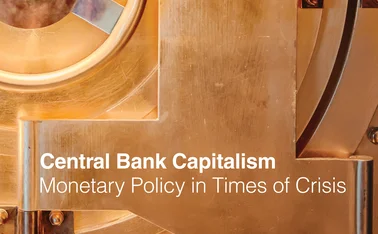
Time to stop handing out the pills: the great QE detox
We are facing a serious inflation threat that will test the resolve of central bankers, writes Jagjit Chadha

The invention and then innovation of quantitative easing (QE) has been a response to financial crises, first in Japan and then across the advanced economies of the world. As policy rates moved towards their effective lower bound, an alternate way of influencing monetary and financial conditions needed to be adopted.
The contemporaneous issuance of large quantities of government debt gave central banks the chance to influence the price of this larger pool of assets by draining the market of some
Only users who have a paid subscription or are part of a corporate subscription are able to print or copy content.
To access these options, along with all other subscription benefits, please contact info@centralbanking.com or view our subscription options here: subscriptions.centralbanking.com/subscribe
You are currently unable to print this content. Please contact info@centralbanking.com to find out more.
You are currently unable to copy this content. Please contact info@centralbanking.com to find out more.
Copyright Infopro Digital Limited. All rights reserved.
As outlined in our terms and conditions, https://www.infopro-digital.com/terms-and-conditions/subscriptions/ (point 2.4), printing is limited to a single copy.
If you would like to purchase additional rights please email info@centralbanking.com test test test
Copyright Infopro Digital Limited. All rights reserved.
You may share this content using our article tools. As outlined in our terms and conditions, https://www.infopro-digital.com/terms-and-conditions/subscriptions/ (clause 2.4), an Authorised User may only make one copy of the materials for their own personal use. You must also comply with the restrictions in clause 2.5.
If you would like to purchase additional rights please email info@centralbanking.com test test test








